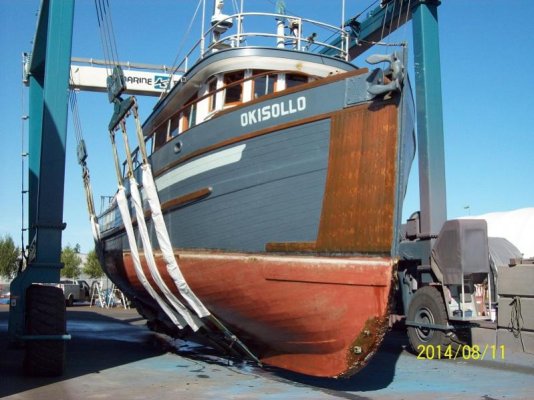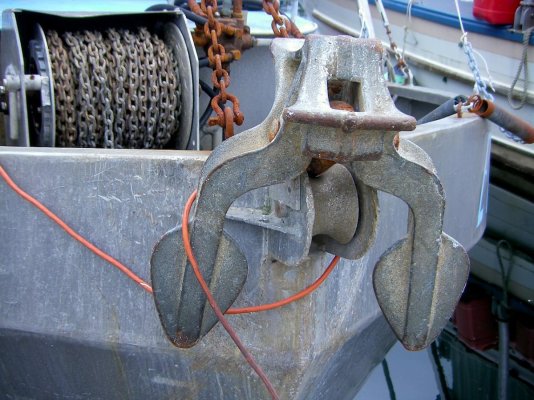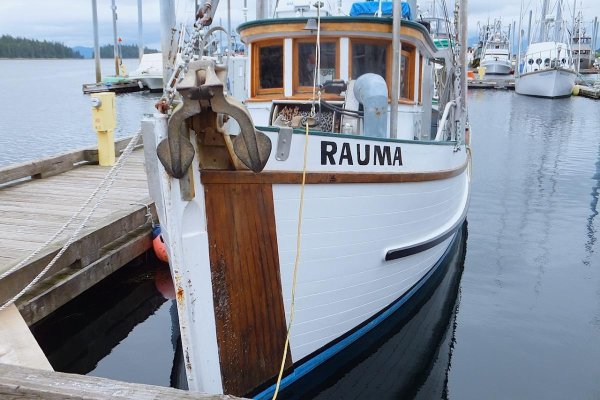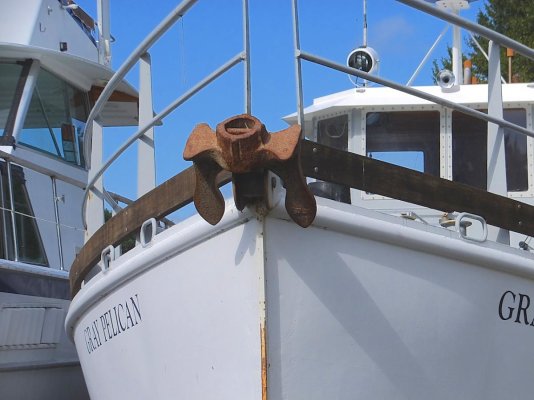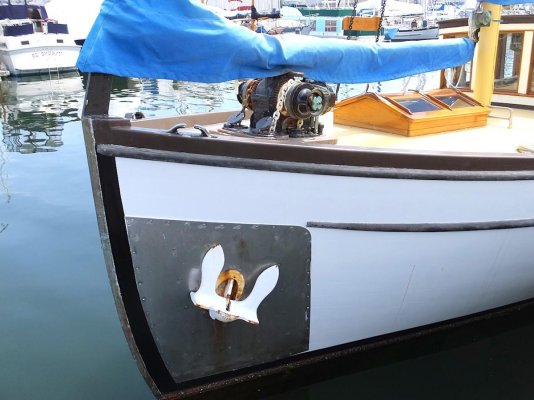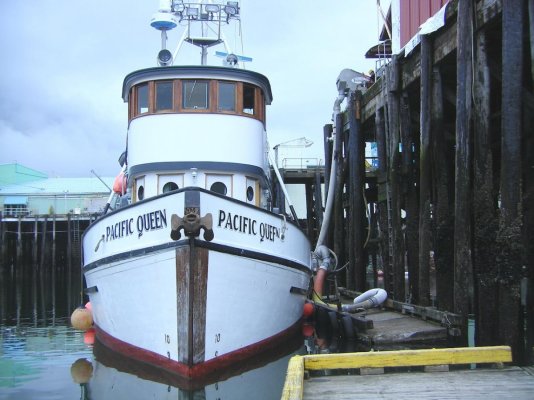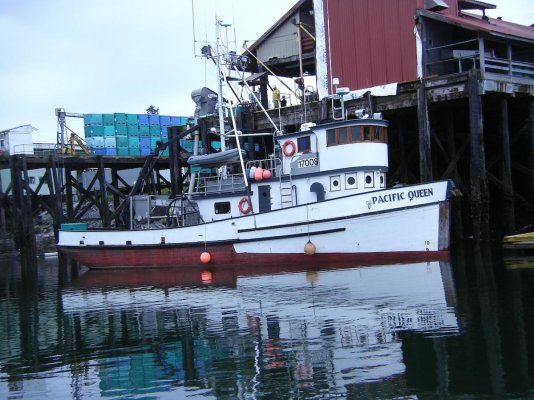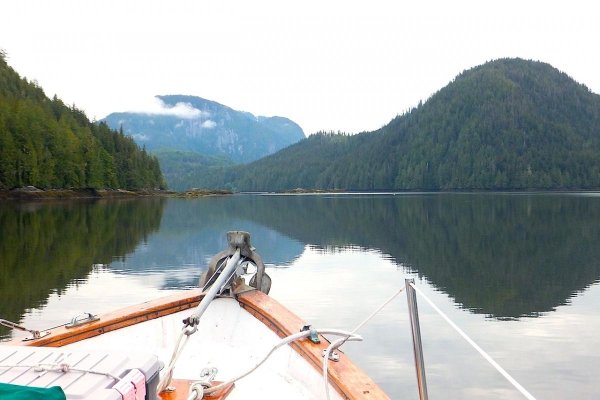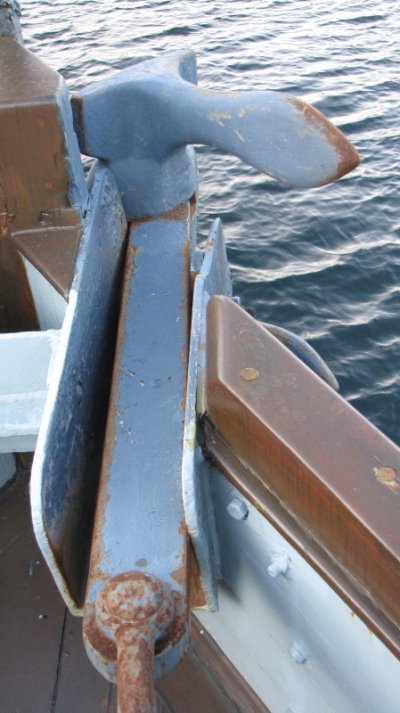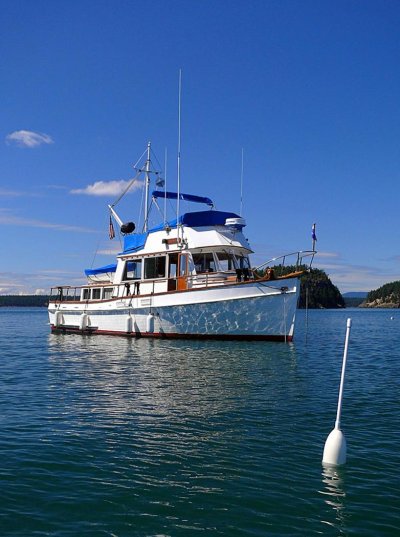I think it's pretty obvious that the chain lying on the bottom keeps the boat in place until such time as the pressure on the boat lifts the chain off the bottom.
Weight is weight. It doesn't matter if it's a length of chain or an anchor or a big rock. Until that weight is moved, it will hold whatever is attached to it in place.
The photo below was taken on a day when we happened to use our trip line and float. The length of the float line was adjusted to account for the tide range, but otherwise it had no other slack in it. So it floated more or less directly above the anchor.
We always use a scope of 5:1 to 7:1. And we deploy our anchor by lowering it as we are drifting back, thus paying out the chain, and then we set the anchor using the boat. Once we've stopped backing against the rode the boat moves forward as the chain sags back onto the bottom.
The place the photo was taken is a small bay in which the current changes almost continuously. So the boat never just sits in one place unless there's enough wind to make it do that. The end result is the boat is always moving around, sometimes describing a complete circle over time.
And guess what the boat was circling on this day. Not the anchor; the boat never got anywhere near the trip line float. It circled the spot on the bottom where the chain touched down from the pulpit.
Granted, the force applied to the boat was not great. So the weight of the chain was sufficient to keep the boat in the same place more or less. The anchor, in this particular instance and all the other instances like it, played no role whatsoever in keeping the boat in place because the "strain" on the rode never overcame the weight of the chain lying on the bottom so a good portion of the chain never moved and thus never transmitted the pull of the boat to the anchor.
If the wind had come up, absolutely the anchor would have begun to play a role. The chain would have been pulled on and picked up and if the wind was strong enough eventually the pull of the boat would be transmitted all the way down to the anchor.
But to say the weight of the chain doesn't keep the boat in place is to contradict some fairly proven principles, like gravity.


![unnamed[5].jpg](/data/attachments/39/39109-16eeb07bd9a7542095342a47bb05a92c.jpg)
